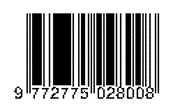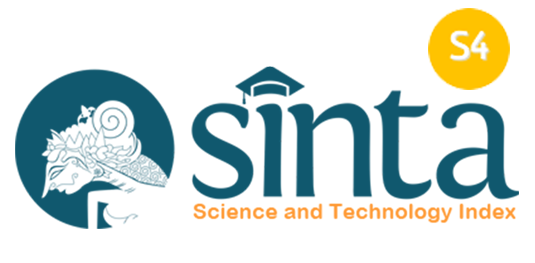DESCRIPTION OF NURSING INTERNSHIP STUDENT'S ANXIETY DURING THE PANDEMIC ERA
Downloads
Introduction: COVID-19 changed students' educational activities, especially during internships taking into account the condition of the number exposed to COVID-19. A preliminary study conducted on 11 students showed that they all felt anxious about undertaking an internship during the pandemic. This can negatively impact quality of life, learning, academic performance, and clinical practice performance. The aim of this study is to find out the description of students' anxiety during internships. Methods: This research is a quantitative observational study with a descriptive research design”a sample of 148 students with a purposive sampling method. The variable in this study was detained students who were undergoing internships during the start of the COVID-19 pandemic. The instrument used in this study was the Hamilton Anxiety Rating for Scale (HAM-A), which had been tested for validity and reliability to see the level of student anxiety during the internship. The results of the questionnaire were then analyzed through descriptive/univariate analysis. Results: Almost all respondents had a mild anxiety level, 120 respondents (81.08%). Conclusions: A suitable coping mechanism for students during internships, is a strategy to deal with anxiety. Clarifying information, consistently implementing health protocols correctly, maintaining health by exercising regularly, eating healthy food, and communicating well with family and friends must still be carried out by students so that the support system remains stable
Albert, P. R. (2015). Why is depression more prevalent in women? Journal of Psychiatry and Neuroscience, 40(4), 219–221. https://doi.org/10.1503/jpn.150205
Aliefia, D. F., Milla, E. S., & Tommy J.F. Wowor. (2022). Faktor - Faktor yang Berhubungan dengan Tingkat Kecemasan Masyarakat pada Masa Pandemi Covid-19 Tahun 2021 di Kelurahan Tirtajaya Kecamatan Sukmajaya Kota Depok. Jurnal Keperawatan, 10(1), 34–44.
Andruszkiewicz, A., Kruczek, A., Betke, K., & Adamczyk, K. (2023). Work anxiety factors, coronavirus anxiety and job satisfaction of Polish nurses facing COVID-19 pandemic outbreak. Applied Nursing Research, 151721. https://doi.org/10.1016/j.apnr.2023.151721
Annisa, D. F., & Ifdil, I. (2016). Konsep Kecemasan (Anxiety) pada Lanjut Usia (Lansia). Konselor, 5(2), 93. https://doi.org/10.24036/02016526480-0-00
Ayubi, E., Bashirian, S., Jenabi, E., Barati, M., & Khazaei, S. (2023). Stress, anxiety and depression among medical students during COVID-19 pandemic: A systematic review and meta-analysis. Personalized Medicine in Psychiatry, 41–42, 100108. https://doi.org/10.1016/j.pmip.2023.100108
Burani, K., & Nelson, B. D. (2020). Gender differences in anxiety: The mediating role of sensitivity to unpredictable threat. International Journal of Psychophysiology, 153, 127–134. https://doi.org/10.1016/j.ijpsycho.2020.05.001
Christianto, L. P., Kristiani, R., Franztius, D. N., Santoso, S. D., Winsen, & Ardani, A. (2020). Kecemasan Mahasiswa Di Masa Pandemi Covid-19. Jurnal Selaras : Kajian Bimbingan Dan Konseling Serta Psikologi Pendidikan, 3(1), 67–82.
Delz, A. K., Gaynor, K., O'Connor, R., Schmieder, L., & Somers, E. (2023). A confirmatory factor analysis of a cognitive model of COVID-19 related anxiety and depression. Acta Psychologica, 234, 103861. https://doi.org/10.1016/j.actpsy.2023.103861
El-Desoky, R., De La Cruz, A., Thornton, J. D., Wanat, M. A., & Varkey, D. (2023). Identifying predictors of generalized anxiety among student pharmacists in response to the COVID-19 pandemic. Currents in Pharmacy Teaching and Learning, 15(1), 34–42. https://doi.org/10.1016/j.cptl.2023.02.005
Fathia, A. S., Martina, M., & Marthoenis, M. (2021). Tingkat Kecemasan Dan Mekanisme Koping Pada Mahasiswa Keperawatan Selama Masa Pandemi Covid-19. Jurnal Ilmu Keperawatan, 9(2), 86–95.
Fauziyyah, R., Awinda, R. C. (2022). Dampak Pembelajaran Jarak Jauh terhadap Tingkat Stres dan Kecemasan Mahasiswa selama Pandemi COVID-19. Bikfokes, 1(2), 113–123.
Fortuna, L. R., Brown, I. C., Lewis Woods, G. G., & Porche, M. V. (2023). The Impact of COVID-19 on Anxiety Disorders in Youth. Child and Adolescent Psychiatric Clinics of North America, 32(3), 531–542. https://doi.org/10.1016/j.chc.2023.02.002
Hasanah, U., Ludiana, Immawati, & PH, L. (2020). Gambaran Psikologis Mahasiswa Dalam Proses Pembelajaran Selama Pandemi Covid-19. Jurnal Keperawatan Jiwa, 8(3), 299–306.
Keller, F. M., Derksen, C., Kötting, L., Dahmen, A., & Lippke, S. (2023). Distress, loneliness, and mental health during the COVID"19 pandemic: Test of the extension of the Evolutionary Theory of Loneliness. Applied Psychology: Health and Well-Being, 15(1), 24–48. https://doi.org/10.1111/aphw.12352
Kim, S.-H., & Park, S. (2021). Influence of learning flow and distance e-learning satisfaction on learning outcomes and the moderated mediation effect of social-evaluative anxiety in nursing college students during the COVID-19 pandemic: A cross-sectional study. Nurse Education in Practice, 56, 103197. https://doi.org/10.1016/j.nepr.2021.103197
Liu, H., Liu, X., & Xu, W. (2022). Prevalence and influencing factors of anxiety in medical students during the COVID-19 pandemic. Heliyon, 8(9), e10487. https://doi.org/10.1016/j.heliyon.2022.e10487
Masha'al, D., Shahrour, G., & Aldalaykeh, M. (2022). Anxiety and coping strategies among nursing students returning to university during the COVID-19 pandemic. Heliyon, 8(1), e08734. https://doi.org/10.1016/j.heliyon.2022.e08734
Parashar, F. (2012). Optimism And Pessimism. http://positivepsychology.org.ik/Pp-Theory/Optimism/98-Optimism- And-Pessimism.Html.
Santomauro, D. F., Mantilla Herrera, A. M., Shadid, J., Zheng, P., Ashbaugh, C., Pigott, D. M., Abbafati, C., Adolph, C., Amlag, J. O., Aravkin, A. Y., Bang-Jensen, B. L., Bertolacci, G. J., Bloom, S. S., Castellano, R., Castro, E., Chakrabarti, S., Chattopadhyay, J., Cogen, R. M., Collins, J. K., ... Ferrari, A. J. (2021). Global prevalence and burden of depressive and anxiety disorders in 204 countries and territories in 2020 due to the COVID-19 pandemic. The Lancet, 398(10312), 1700–1712. https://doi.org/10.1016/S0140-6736(21)02143-7
Saravanan, C., Mahmoud, I., Elshami, W., & Taha, M. H. (2020). Knowledge, Anxiety, Fear, and Psychological Distress About COVID-19 Among University Students in the United Arab Emirates. Frontiers in Psychiatry, 11. https://doi.org/10.3389/fpsyt.2020.582189
Stevens, J. S., & Hamann, S. (2012). Sex differences in brain activation to emotional stimuli: A meta-analysis of neuroimaging studies. Neuropsychologia, 50(7), 1578–1593. https://doi.org/10.1016/j.neuropsychologia.2012.03.011
Stuart, G. W. (2013). Buku Saku Keperawatan JIwa. EGC.
Sumoked, A., Wowiling, F., & Rompas, S. (2019). Hubungan Mekanisme Koping Dengan Kecemasan Pada Mahasiswa Semester Iii Program Studi Ilmu Keperawatan Fakultas Kedokteran Yang Akan Mengikuti Praktek Klinik Keperawatan. Jurnal Keperawatan, 7(1). https://doi.org/10.35790/jkp.v7i1.22897
World Health Organization. (2022). COVID-19 pandemic triggers 25% increase in prevalence of anxiety and depression worldwide. https://www.who.int/news/item/02-03-2022-covid-19-pandemic-triggers-25-increase-in-prevalence-of-anxiety-and-depression-worldwide
Yang, X., Fang, Y., Chen, H., Zhang, T., Yin, X., Man, J., Yang, L., & Lu, M. (2021). Global, regional and national burden of anxiety disorders from 1990 to 2019: results from the Global Burden of Disease Study 2019. Epidemiology and Psychiatric Sciences, 30, e36. https://doi.org/10.1017/S2045796021000275
Yunere, F., & Yaslina, Y. (2020). Hubungan Stigma Dengan Kecemasan Perawat Dalam Menghadapi Pandemi Covid-19. Prosiding Seminar Kesehatan Perintis , 3(1). https://covid19.kemkes.go.id,
Copyright (c) 2023 Amellia Mardhika, Selvyana Dewi Anggraeni, Anestasia Pangestu Mei Tyas, Lailatul Fadliyah, Emuliana Sulpat

This work is licensed under a Creative Commons Attribution 4.0 International License.
Copyright Notice
1. The journal allows the author to hold the copyright of the article without restrictions.
2. The journal allows the author(s) to retain publishing rights without restrictions.
3. The legal formal aspect of journal publication accessibility refers to Creative Commons Attribution (CC BY).














